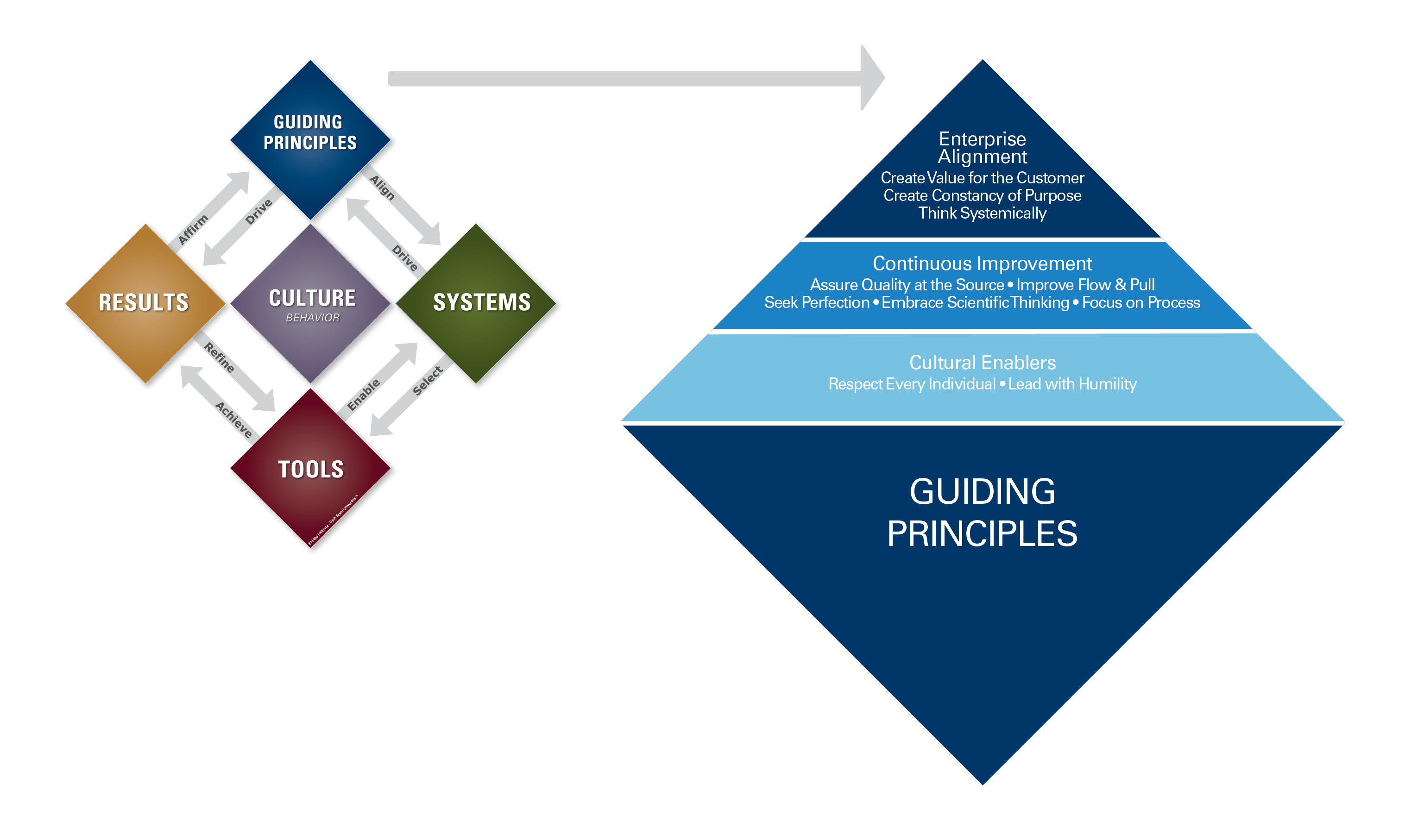by Bruce Hamilton, Shingo Examiner and member of the Shingo Academy
In my experience, collaboration is a prized quality of enterprise excellence more frequently discussed as an elusive ideal than actually practiced. Yet, this non-technical aspect of continuous improvement—working together—is truly the catalyst that amplifies both individual and organizational innovation. Therefore, as an examiner for the Shingo Prize, I try to look beneath the myriad of improvement tools to discover a collaborative foundation. For example, I listen in conversations for language that connotes a culture of collaboration. A word like “we” suggests a cohesive spirit, while use of the word “they” may signal a culture that lacks collaboration. The first Insight from the Shingo Model links desired outcomes to human behavior: Ideal Results Require Ideal Behavior. So, a less-than-ideal and an all-too-common behavior, like referring to a part of one’s own organization as “they,” is a red flag. In this sense, behavior is a leading indicator for collaboration.
When I hear the word “they” in conversation, I ask, “Who is ‘they’?” Sometimes “they” refers to management, and other times it refers to an upstream or downstream department. In most organizations, there are many cracks in the fabric of collaboration or disconnects where communication stalls and misunderstandings abound. The cracks may be in vertical alignment of organizational purpose or horizontal as in flow of value to the customer. In either case, understanding more specifically what is causing this less-than-ideal behavior is key to improving collaboration. The second Insight from the Shingo Model, Purpose and Systems Drive Behavior, suggests that behaviors, both good or bad, are rooted in an organization’s shared purpose and the systems provided to employees. If we want to change behavior (for example, turn they into we), we must clarify purpose and modify systems.
In a recent workshop, a student asked the following question: If collaboration is such a good thing, then why don’t we see more of it? Her challenge prompted a short digression from the usual material to address the question of, “Why not collaborate.” We structured our inquiry in the form of a Why-Not diagram, an ingenious device created by Deming Prize Winner, Ryuji Fukuda, to surface obstacles to improvement.

Examination of those things that prevent us from reaching the ideal is a great place to establish some alignment on the problems to solve. Students were encouraged to share thoughts about obstacles to collaboration—one per Post-it note per obstacle. In the space of fifteen minutes, dozens of Post-it notes were written and organized by cause, illuminating the magnitude of creating a collaborative culture. Some of the suggested causes related to management policy like cost accounting rules or executive compensation. Others, such as physical layout, were more logistical. Still others dealt with social norms. All were evidenced by non-ideal behaviors. From executives to managers and frontline team members, we could identify specific behaviors that thwart collaboration.
“These kinds of obstacles are deeply imbedded in our belief systems; this is our culture,” a class participant noted.
“Exactly,” I responded. This is the crux of the third Insight of the Shingo Model: Principles Inform Ideal Behavior.

Figure No. 2: The Shingo Model and the Shingo Guiding Principles
The Shingo Guiding Principles provide a collective vision of the ideal to help us align our systems to drive ideal behavior. In this case, the vision to create a collaborative culture. Collaborative behavior, in fact, is informed by every one of the Shingo Guiding Principles and, in turn, amplifies the impact of each principle.
Want to learn more about developing your collaborative culture? Please join Bruce for the webinar, “Amplifying Lean: The Collaboration Effect” on August 23 at 1:00 p.m. EDT. Register by clicking HERE.
You can also learn more at the 18th Annual Northeast LEAN Conference organized by GBMP on September 28-29. Click HERE for more information.
